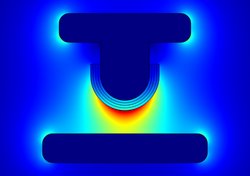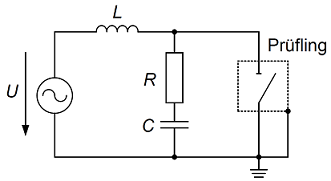Hybrid insulation concepts with environmentally friendly insulating gases

In existing gas-insulated switchgear, sulfur hexafluoride is the predominant insulating medium. In the foreseeable future, however, this powerful greenhouse gas is to be replaced by an environmentally friendly alternative, such as synthetic air. For the optimization of the insulation capabilities of air-insulated switchgear, hybrid insulation concepts by coating with dielectric solids of different coating thicknesses are a promising approach. In this context, the starting points are investigations on the capacitive control of the electric field as well as influences of various surface properties. Basic investigations of solid materials and properties as well as discharge mechanisms in synthetic air are the subject of this research project. Within the scope of these activities, the application potential for gas-insulated switchgear of the high voltage level up to 420 kV is evaluated.
For further information please contact: Patrick Gambeck M.Sc., Maximilian Millisterfer M.Sc.
Gas-insulated AC disconnectors and earthing switches

Disconnectors provide visible galvanic insulation of electrical units and networks when open. In addition, they are capable of switching smaller currents that occur when connecting or disconnecting electrical system components. They are also able to control large currents during commutation processes, as long as no significant change in voltage occurs. Earthing switches are used for earthing and short-circuiting plant components. They are not required to carry continuous operating currents, but must withstand short circuits for a defined time. The replacement of sulfur hexafluoride as an insulating gas with alternative insulating gases such as synthetic air creates new challenges for the use of gas-insulated disconnecting and grounding switches. Switching operations under various conditions, as well as concepts to increase switching performance, are investigated.
For further information please contact: Felix Kaiser M.Sc.
Electrothermal Characterization of Insulation Systems for HVDC Cable Joints
As a result of the advancing energy transition towards renewable energies and the steadily increasing demand for electrical energy, high-voltage direct-current transmission systems (HVDC) are becoming increasingly important. For construction reasons, the power lines, primarily designed as underground cables, must be connected by cable joints at intervals of a few kilometers. The large number of cable joints makes them a sensitive part of the HVDC transmission. Therefore, electrothermal characterization and optimization of the insulation system of HVDC cable joints is of particular interest. Basic investigations on different insulation materials (elastomers and thermoplastics), such as sensitivity analyses or measurement of material properties, represent a significant part of the research project. Verification of the experimentally obtained results using a simulation tool is carried out within the framework of a partner project.
For further information please contact: Thomas Lübeck, M.Sc.